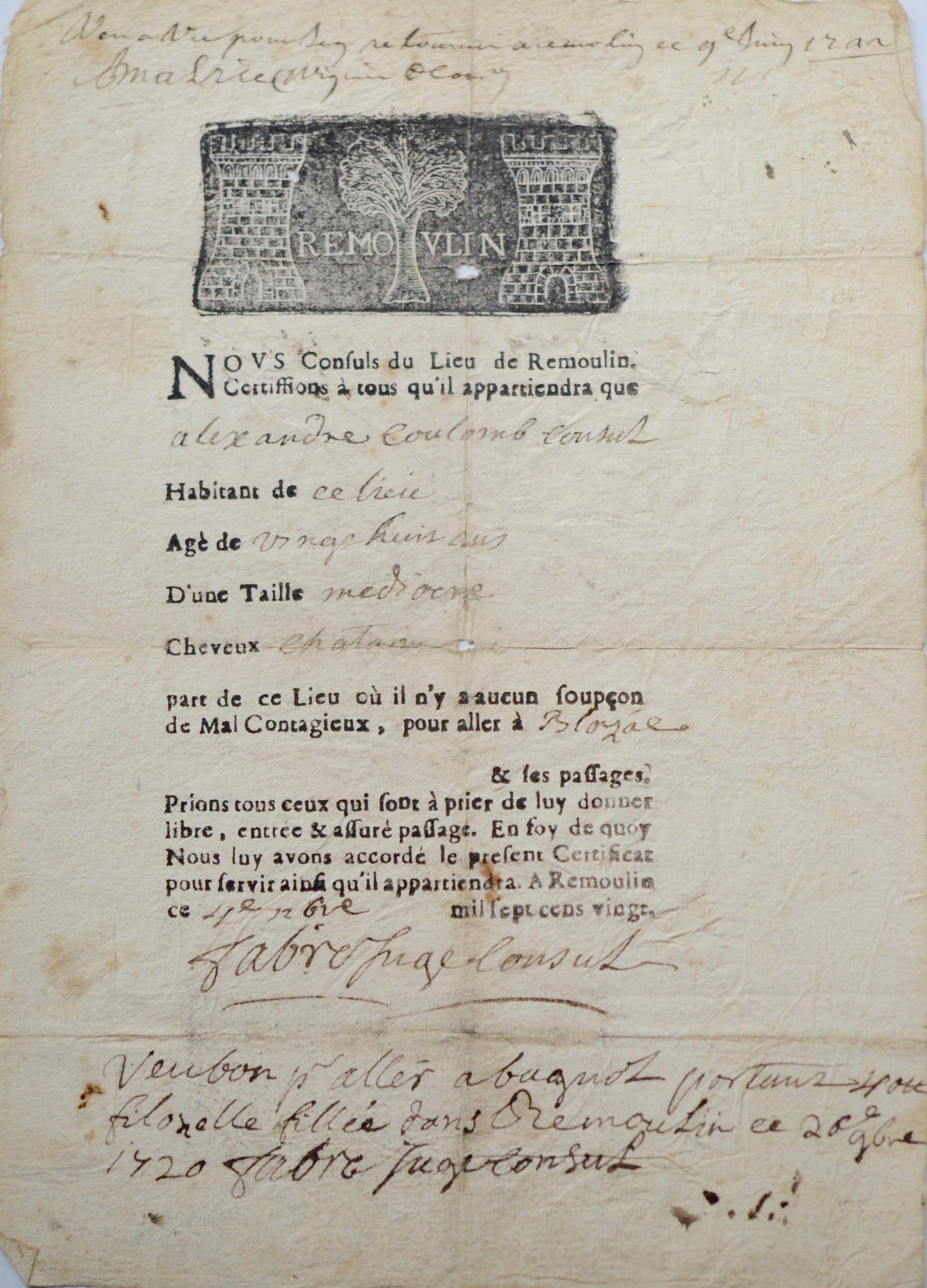2000 likes, 950 retweets: Jérémie Ferrer-Bartomeu, doctor of history, graduate of the École des Chartes and teacher-researcher at the University of Neuchâtel (Switzerland), did not expect such success by posting on Twitter the photo of an 18th century pass ... which resembles in many respects the derogatory certificate of compulsory displacement during this period of confinement.
»Download the new travel certificate
Dated November 4, 1720, this document was written when there was an epidemic of plague, known as the Marseille plague, in the south of France. Over 100,000 people died there. "This is one of the last very large epidemic outbreaks that France is experiencing, with the exception of course of the Spanish flu" , underlines the academic.
Read also: Coronavirus, Spanish flu, SARS ...: the deadliest epidemics in history
This safe conduct, sold by the Traces Écrites bookshop at a price of 500 euros, authorizes Alexandre Coulomb, a 28-year-old consul " of mediocre size [ordinary, Editor's note] and with brown hair ", to leave Remoulins (Gard) " where he 'there is no suspicion of contagious disease ' to get to Blauzac (Gard). The signatory, Judge-Consul Fabre, " begs those who are to pray " to allow the young man to circulate freely.
A world of reduced mobility
Like the derogatory certificate of displacement currently in force, this form is partly printed, partly handwritten. Jérémie Ferrer-Bartomeu emphasizes that the accuracy of the information on this pass - size and hair color of Alexandre Coulomb - can be explained by the need to clearly identify its owner.
Much more than today, this certificate illustrated by the arms of the city of Remoulins was indeed essential for the person who wore it. “In the 18th century, the repression was very strict. This is why it was so important to have a safe conduct from an authority, ”comments the historian. " This shows the importance that state surveillance is taking over individuals."
Another essential element of the context to take into account: “At the time, even outside the epidemic, mobility was reduced. The world was extremely compartmentalized: you wouldn't come back to a city like that , ” recalls Jérémie Ferrer-Bartomeu. "We were suspicious of foreigners and in times of an epidemic, these deep-rooted reflexes increased."

